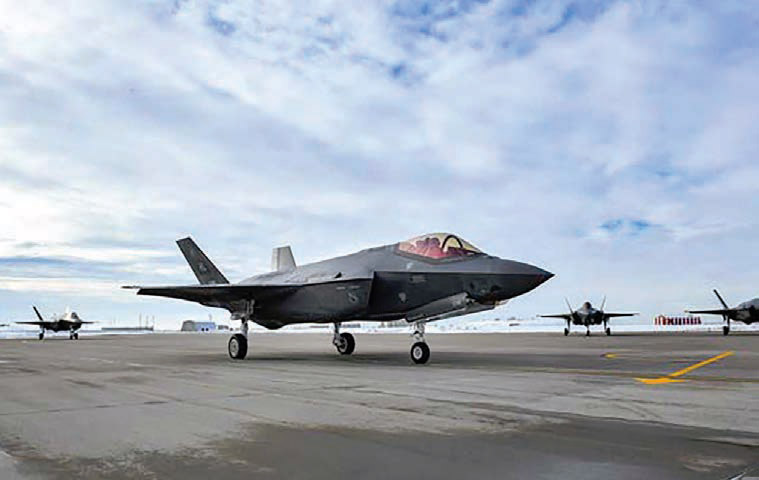The defense sector in Utah has a $9.2 billion annual economic impact, according to preliminary figures calculated by the University of Utah in a study commissioned by the Utah Defense Alliance.
Meanwhile, a just-released Hill Air Force Base study indicates the base had a $3.34 billion economic impact in 2016, while the UofU study puts the figure at $4.5 billion. Kevin Sullivan, executive director of the alliance, said the studies used different job-impact modeling.
Sullivan recited the UofU study’s figures during the recent Northern Utah Business Economic Forecast event in Ogden. The final report is expected to be issued this month. It uses statistics from 2015, which Sullivan said was the most recent period for which figures were available.
The sector — which includes military installations, defense contracting, grants to state or educational institutions and veteran-related activities — accounts for 109,000 jobs in the state. It accounts for 5.8 percent of Utah jobs, 7.1 percent of Utah earnings ($6.4 billion) and 6.2 percent of state’s GDP, Sullivan said.
“[It’s] kind of a pretty big dog and I don’t think most people would have recognized or realized in terms of what the defense sector brings to the state in terms of economic impact,” he told the crowd.
The study indicates that Hill Air Force Base has 47,000 jobs, including 16,000 active duty and Air Force civilian employees (including about 5,000 military).
Sullivan’s presentation indicated that the Tooele Army Depot supports 1,100 jobs and has an economic impact of $114 million; the Utah National Guard supports 13,000 jobs and has a $840 million impact; reserves, recruiting and ROTC support 6,700 jobs and have a $430 million impact; and veteran activities support 24,000 jobs and have a $1.9 billion impact.
“One of the interesting things about the military installations in this state is they largely employ Air Force or Army civilians,” Sullivan said. “That’s different than most other military installations. So when we’re talking about these jobs, we’re not talking about transitory military guys, for the most part. We’re talking about Utahns.”
The Hill economic impact statement showed there were 27,365 total personnel within Hill AFB, including 5,636 military, 5,591 military dependents and 16,138 civilians. It indicated a federal payroll of $1.34 billion and expenditures of $710 million in 2016. It also showed that the base created approximately $1.29 billion in jobs.
The annual report was prepared by Hill cost analysts and was calculated using identifiable off-base local area spending from gross expenditures.
As for the near future of Hill Air Force Base, Sullivan said he expects “more of the same,” although with some caveats. Things could change if there is another round of Base Realignment and Closure (BRAC), he said. Sullivan said the final report also will include an analysis of the effects if Hill Air Force Base were closed, although he presented no figures at the event. “It’s pretty scary, quite frankly,” he said.
Unless and until a closure happens, the base will be adding work related to the F-35 aircraft, “but the reality is we’re not retiring the F-16s and we’re not retiring A-10s as quickly as the Air Force would like, so that is not going away,” he said. The base is divesting C-130 work done for the past 15-20 years so that it can accommodate the F-35s, he added.
Likewise, the base is well-positioned to be involved in the Ground-Based Strategic Deterrent (GBSD) program, which will replace the Intercontinental Ballistic Missile System (ICBM) program. Hill has been “ICBM Central” for the nation, he said, with the base handling all depot-level maintenance for U.S. ICBMs.
The GBSD program — which figures to cost $60 billion to $80 billion — “looks to promise more workload, obviously,” Sullivan said. “That $60 or $80 billion is not all going to be spent in the state of Utah, but some of it will. We’re already seeing contractors begin to migrate around the base who are interested in that work.”
The Trump administration has spoken about increasing defense spending, freezing federal hiring, reducing the cost of the F-35 and upgrading F-18s, but, Sullivan said, “we have to see what that means for Hill Air Force Base in the future,” Sullivan said.
The Northern Utah Business Economic Forecast event was sponsored by Bank of Utah, the Ogden/Weber Chamber of Commerce and Weber State University’s John B. Goddard School of Business and Economics.








